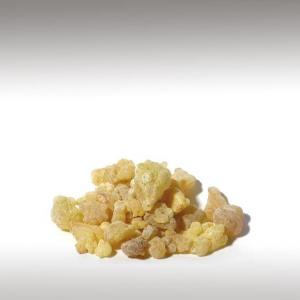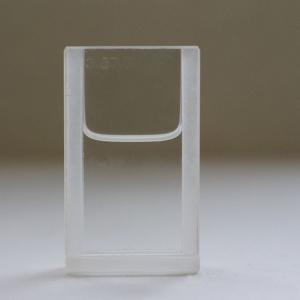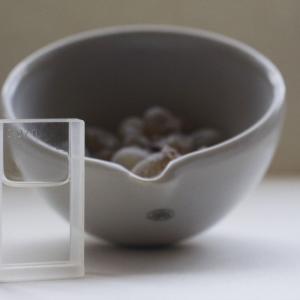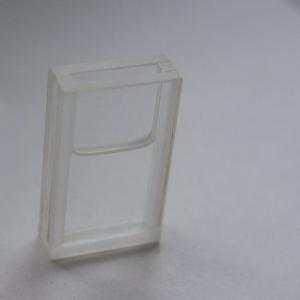
INDIAN FRANKINCENSE ESSENTIAL OIL (BOSWELLIA SERRATA) - ESSENTIAL OILS

BASE / GENERAL DATA
Information submited: September 27, 2015 Modified: March 7, 2018 By: OperaDreamhouse
Botanical Name: Boswellia serrata
Botanical Origin: India
Common Method of Extraction: Steam distilled
Part Typically Used: Gum Resin
Color: Clear to pale yellow
Consistency: Thin
Perfumery Note: Medium
Shelf Life: 2-3 years
Strength of Initial Aroma: Spicy, balsamic, citrus-terpenic fragrance, instantly recognizable odor.
Blends Well With: Basil, bergamot, buddah wood, cedarwood himalayan, chamomile roman, cinnamon leaf or bark, clary sage, coriander, geranium, ginger fresh, grapefruit pink, kaffir lime, lavender bulgarian, lemon, lime, neroli, orange sweet, sandalwood, siam wood, tangerine, vanilla bourbon essential oils.
Common name: Indian Frankincense, The Liquid Gold
Sanskrit: Shallaki, Sallai guggulu
Latin : Olibanum Indicum
Chemical structure: There has thus been much confusion about the proper identification of the various types of Frankincense. This same complexity carries over to the chemical composition of the oil, which has over 200 individual natural chemicals that endow it with a complex aromatic bouquet and therapeutic profile. There is considerable variation in the proportion of these components depending on the micro-climate where the trees grow, the season at which the resin is harvested, and a number of other factors.
Nutriceuticals are natural products, or synthesized compounds that match natural products, prepared by enzymatic transformation that retains a natural quality, rather than simple chemical transformation. They are used as dietary or herbal supplements that have implied or explicitly proclaimed health benefits. The concept of a nutriceutical came from the idea that nutritional supplements, such as vitamins and minerals, could be used in place of pharmaceuticals in alleviating some ailments or, at the least, promoting the healthy function of the body. The substances in the nutriceuticalcategory include beneficial compounds in foods that are not counted among the nutrients, as well as various herbs and herbal active components.
Frankincense have given rise to popular nutriceuticals: Frankincense yields Boswellic acids (named after the botanical source Boswellia).
Boswellic acids are reputed to have potent anti-inflammatory activity. Research has demonstrated an inhibition of the 5-LOX (lipoxygenase) system, involved in the enzymatic pathways that produce inflammatory molecules (leukotrienes and thromboxanes) from common fatty acids. Drug products that inhibit these enzymes are mainly used in the treatment of arthritis, though there are applications for other inflammatory diseases, such as asthma and ulcerative colitis.
Further,5-LOXinhibitors, including Boswellic acid, are now being investigated for potentialanticancer activity. The standardized Boswellic acid preparations list their content as 50 - 70% Boswellic acids, though it has been suggested that these are actually total organic acids from Frankincense, with Boswellic acids as the major component. The Sabinsa product is trademarked Boswellin, which should not be confused with the more general term Boswellic acid.
Note: Frankincense from India has its own unique aroma distinct from that of Arabian (Boswellia Sacra) and North African (Boswellia Carterii) Frankincense. Large, wonderfully fragrant golden brown Indian Frankincense resins with a deeper more balsamic and woody notes than the Arabian and North African resins.
The word Frankincense comes from the term “Franc encens”, which means quality incense in old French. Frankincense can properly be said to belong to the family of sacred scents.
Boswellia Serrata is a plant that produces Indian Frankincense, Salai, referred to in Sanskrit as Shallaki and in Latin as Olibanum Indicum.
The plant is native of India and the Punjab region that extends into Pakistan. The Shallaki tree is generally found in dry hilly areas of the Indian sub-continent, mainly in states of Maharashtra, Gujarat and Rajasthan. India produces the Frankincense most used in Ayurvedic medicine.
Frankincense trees can live for at least a hundred years. Their flowers are popular with bees, and the long flowering period from October to February is helpful for bee colony maintenance.
Frankincense is harvested by making small incisions in the bark of the aromatic tree, producing a milky white resin that hardens as it dries. The collected resin is separated into grades and stored in caves to cure before being sold.
Most resin (whether Myrrh or Frankincense) is obtained by tapping: making deliberate incisions with a specially designed tool or ordinary axe, about 2 inches long, into the bark of the tree.
The milky liquid that exudes hardens on exposure to air into droplets or "tears", which are then easily detached by the collector about two weeks later. New tappings are made at the same place as old ones after removing hardened resin from the previous cut. If the tapping interval is short, then a light scratching of the wood is usually sufficient to cause the resin to flow again.
The particular details of the tapping-the time of year it is undertaken, its duration, and the interval between individual tappings-vary according to the species and the customs in the area of production. For example, in Somalia there are usually two periods when Boswellia is tapped, each lasting 3-4 months, involving successive tappings at approximately 15 day intervals, with the timing of the tapping periods dependant on the onset and extent of the rains.
The resin is stored for about 12 weeks to harden. The only processing undertaken after collection is sorting and grading of the resin globules, usually done by the local merchant to whom it is sold rather than the collector.
Frankincense is among the most widely used of all essential oils. Its benefits are numerous and it has been used extensively in traditional cultures for many thousands of years. The Frankincense (Boswellia serrata) is among the most rich and exquisite of the majestic Frankincense varietals. The clean, citrus-terpenic fragrance of Frankincense oil is entwined in ancient myth and sacred ritual.
This plant has been a true gift to the human community, serving variously not only as medicine but also as a source of dyes and of cosmetics, along with its use as an air-freshener, mosquito repellent and essential source of livelihood for individuals and communities. The resin has been a major item of commerce for at least 3,000 years.
Frankincense, along with Gold and Myrrh, was included in the gifts presented by the wise men to the infant Christ.
The Frankincense mentioned in the Old Testament of the Bible was likely the Boswellia Serrata variety, which was introduced into church ceremonies at the beginning of Christianity in Europe during the Middle Ages.
On average, during this time about 500 tons of Frankincense were used by the Orthodox and Roman Catholic churches per year. Burning Frankincense in churches had hygienic functions as well as spiritual importance: people of the Middle Ages lived in extremely unsanitary conditions, so the fumigation of churches helped reduce contagion through atmospheric purification.
Botanical Origin: India
Common Method of Extraction: Steam distilled
Part Typically Used: Gum Resin
Color: Clear to pale yellow
Consistency: Thin
Perfumery Note: Medium
Shelf Life: 2-3 years
Strength of Initial Aroma: Spicy, balsamic, citrus-terpenic fragrance, instantly recognizable odor.
Blends Well With: Basil, bergamot, buddah wood, cedarwood himalayan, chamomile roman, cinnamon leaf or bark, clary sage, coriander, geranium, ginger fresh, grapefruit pink, kaffir lime, lavender bulgarian, lemon, lime, neroli, orange sweet, sandalwood, siam wood, tangerine, vanilla bourbon essential oils.
Common name: Indian Frankincense, The Liquid Gold
Sanskrit: Shallaki, Sallai guggulu
Latin : Olibanum Indicum
Chemical structure: There has thus been much confusion about the proper identification of the various types of Frankincense. This same complexity carries over to the chemical composition of the oil, which has over 200 individual natural chemicals that endow it with a complex aromatic bouquet and therapeutic profile. There is considerable variation in the proportion of these components depending on the micro-climate where the trees grow, the season at which the resin is harvested, and a number of other factors.
Nutriceuticals are natural products, or synthesized compounds that match natural products, prepared by enzymatic transformation that retains a natural quality, rather than simple chemical transformation. They are used as dietary or herbal supplements that have implied or explicitly proclaimed health benefits. The concept of a nutriceutical came from the idea that nutritional supplements, such as vitamins and minerals, could be used in place of pharmaceuticals in alleviating some ailments or, at the least, promoting the healthy function of the body. The substances in the nutriceuticalcategory include beneficial compounds in foods that are not counted among the nutrients, as well as various herbs and herbal active components.
Frankincense have given rise to popular nutriceuticals: Frankincense yields Boswellic acids (named after the botanical source Boswellia).
Boswellic acids are reputed to have potent anti-inflammatory activity. Research has demonstrated an inhibition of the 5-LOX (lipoxygenase) system, involved in the enzymatic pathways that produce inflammatory molecules (leukotrienes and thromboxanes) from common fatty acids. Drug products that inhibit these enzymes are mainly used in the treatment of arthritis, though there are applications for other inflammatory diseases, such as asthma and ulcerative colitis.
Further,5-LOXinhibitors, including Boswellic acid, are now being investigated for potentialanticancer activity. The standardized Boswellic acid preparations list their content as 50 - 70% Boswellic acids, though it has been suggested that these are actually total organic acids from Frankincense, with Boswellic acids as the major component. The Sabinsa product is trademarked Boswellin, which should not be confused with the more general term Boswellic acid.
Note: Frankincense from India has its own unique aroma distinct from that of Arabian (Boswellia Sacra) and North African (Boswellia Carterii) Frankincense. Large, wonderfully fragrant golden brown Indian Frankincense resins with a deeper more balsamic and woody notes than the Arabian and North African resins.
The word Frankincense comes from the term “Franc encens”, which means quality incense in old French. Frankincense can properly be said to belong to the family of sacred scents.
Boswellia Serrata is a plant that produces Indian Frankincense, Salai, referred to in Sanskrit as Shallaki and in Latin as Olibanum Indicum.
The plant is native of India and the Punjab region that extends into Pakistan. The Shallaki tree is generally found in dry hilly areas of the Indian sub-continent, mainly in states of Maharashtra, Gujarat and Rajasthan. India produces the Frankincense most used in Ayurvedic medicine.
Frankincense trees can live for at least a hundred years. Their flowers are popular with bees, and the long flowering period from October to February is helpful for bee colony maintenance.
Frankincense is harvested by making small incisions in the bark of the aromatic tree, producing a milky white resin that hardens as it dries. The collected resin is separated into grades and stored in caves to cure before being sold.
Most resin (whether Myrrh or Frankincense) is obtained by tapping: making deliberate incisions with a specially designed tool or ordinary axe, about 2 inches long, into the bark of the tree.
The milky liquid that exudes hardens on exposure to air into droplets or "tears", which are then easily detached by the collector about two weeks later. New tappings are made at the same place as old ones after removing hardened resin from the previous cut. If the tapping interval is short, then a light scratching of the wood is usually sufficient to cause the resin to flow again.
The particular details of the tapping-the time of year it is undertaken, its duration, and the interval between individual tappings-vary according to the species and the customs in the area of production. For example, in Somalia there are usually two periods when Boswellia is tapped, each lasting 3-4 months, involving successive tappings at approximately 15 day intervals, with the timing of the tapping periods dependant on the onset and extent of the rains.
The resin is stored for about 12 weeks to harden. The only processing undertaken after collection is sorting and grading of the resin globules, usually done by the local merchant to whom it is sold rather than the collector.
Frankincense is among the most widely used of all essential oils. Its benefits are numerous and it has been used extensively in traditional cultures for many thousands of years. The Frankincense (Boswellia serrata) is among the most rich and exquisite of the majestic Frankincense varietals. The clean, citrus-terpenic fragrance of Frankincense oil is entwined in ancient myth and sacred ritual.
This plant has been a true gift to the human community, serving variously not only as medicine but also as a source of dyes and of cosmetics, along with its use as an air-freshener, mosquito repellent and essential source of livelihood for individuals and communities. The resin has been a major item of commerce for at least 3,000 years.
Frankincense, along with Gold and Myrrh, was included in the gifts presented by the wise men to the infant Christ.
The Frankincense mentioned in the Old Testament of the Bible was likely the Boswellia Serrata variety, which was introduced into church ceremonies at the beginning of Christianity in Europe during the Middle Ages.
On average, during this time about 500 tons of Frankincense were used by the Orthodox and Roman Catholic churches per year. Burning Frankincense in churches had hygienic functions as well as spiritual importance: people of the Middle Ages lived in extremely unsanitary conditions, so the fumigation of churches helped reduce contagion through atmospheric purification.

SPIRITUAL PRACTISES DATA
Information submited: September 27, 2015 Modified: March 7, 2018 By: OperaDreamhouse
Frankincense has always been synonymous with spirituality. Like Myrrh, it was a prized possession in the ancient world, equal in value to many precious gems and metals. Its ancient use in ritual and temple offerings across religions both historic and modern day attest to its powerful spiritual attributes.
Frankincense essential oil is revered for its powerfully uplifting and clarifying effects on the body and mind. When diffused in your home, it provides protection for you and your family encourages healthy moods. It will turn the fragrance of your home into that of a temple.
A few drops of this high-quality Frankincense oil can be applied to the palms, rubbed together and directly inhaled. This produces an instantaneous clarifying effect and a strong activation of the life-force (Prana). Frankincense essential oil can also be mixed with a carrier oil such as Coconut or Sesame and massaged into the skin to help the body stay limber and relaxed. It is particularly helpful for those who practice yoga.
Inactice yoga.
In spiritual and meditationblends it exudes a vibrational energy leading to relaxation of mental clutter to ground and connect with oneself. Frankincense serrata is an excellent choice for calming the mind and reducing stress.
Frankincense promote a good sleep, add 2-3 drops on a tissue, fold and place inside your pillowcase. Managing emotional and behaviour problems - profound psychologicaland spiritual benefits.
Frankincense moves Qi (Chi) energy to quicken the blood and also stretches the sinews, frees the channels, soothes the network vessels, and relieves pain.

MEDICINE / HEALTH DATA
Information submited: September 27, 2015 Modified: March 7, 2018 By: OperaDreamhouse
Therapeutic Properties :
Anti-inflammatory
Antiseptic
Anxiety
Arthritis
Astringent
Carminative
Rheumatism
Stress
Tendonitis.
Contraindications : None.
Pregnancy / Lactation : Indian Frankincense is likely safe when used in amounts commonly found in foods. But don’t use it in the larger amounts needed for medicinal effects.
Pregnancy / Lactation: Frankincense is safe to use during pregnancy and lactation period (beneficial for fading of stretch marks, surgery scars or marks associated with pregnancy, and for healing dry or cracked skin. reduces appearance of scars and it may also help reduce the appearance of dark spots caused from acne blemishes.).
Children:
Research shows traditional use of Frankincense in driving away evil spirits (Egyptians, Greeks, Romans, French, Asian folklore and rituals), and if we think of these spirits as obsessions, fears and anxieties which may have become manifest as physical illness, we understand the benefits of applying Frankincense for all occasions. In Somali, Ethiopian, Arabian, and Indian cultures, it is suggested that burning Frankincense daily in the house brings good health.
In Ayurvedic medicine Indian Frankincense has been used for hundreds of years for the attempted treatment of arthritis. Frankincense quicken the blood and relieve pain. However, Frankincense moves Qi (Chi)to quicken the blood and also stretches the sinews, frees the channels, soothes the network vessels, and relieves pain.
Shallaki or Sallai Guggulu (Boswellia Serrata), has been used for thousands of years in Ayurveda as the extract containing anti- inflammatory properties. It is also widely used as a wonder drug for treatment of against arthritis, rheumatism and its related disorders.
Also known as Indian Frankincense (Salai) and Olibanum, Ayurvedic medicine in India refers to it as "Dhoop” and is used extensively for conditions of arthritis including osteoarthritis, wound healing and air purification.
According to the Advanced Textbook of Traditional Chinese Medicine and Pharmacology, Frankincense and Myrrh are quite similar in their use internally. The authors say that both herbs regulate Qi energy and blood, and that they are often used together, but "their difference lies in that Frankincense can also ease the tendons and muscles, while Myrrh is better at activating blood circulation and removing stasis".
The most important component of the tree is the gum resin, which is dried and powdered to yield the medication. This powdered resin contains essential oils and a mixture of β- boswellic acids, which help reduce inflammation naturally between the joints, or even muscle inflammation in the lower back.
It is also used in respiratory ailments like severe cough. Many studies have shown the effect of this powder against disorders like bronchitis and asthma by inhibiting the inflammatory conditions leading to these diseases.
Shallaki has also remarkable properties against high blood pressure or hypertension in many patients. It also helps to maintain normal levels of cholesterol.
Frankincense oil reduces symptoms associated with menstruation and menopause by balancing hormone levels. It can help relieve pain, cramps, constipation, headaches, anxiety, nausea, fatigue, and mood swings.
Frankincense oil also helps with regulating estrogen production and reduces the risk of tumor or cyst development in pre-menopausal women.
It helps to flush out excess water from the abdomen that can cause bloating, and even relieves PMS-related stomach pains by speeding up the secretion of digestive enzymes.
It has been shown to be beneficial in reducing symptoms of leaky gut syndrome, colitis.
Frankincense essential oil is an amazing gift, it helps the cells of our body’s remember how to be perfect again as our original recipe was written.
Frankincense seems to be the master mind of oils - it makes everything remember how to be perfect - the cells, the tissues, the organs, the systems, whole body.
A few drops of the oil can be sprinkled on a hot, wet towel and applied to the chest to open the lungs and enhance deep breathing.
“In a trial published in 2011 in cancer, researchers from Egypt examined the ability of Boswellia to lower the cerebral edema associated with radiation treatments for brain tumors. The researchers concluded that BS (Indian Frankincense) could potentially be steroid-sparing for patients receiving brain irradiation.” Myrna Chandler Goldstein and Mark A. Goldstein M.D, Healthy Herbs.
In Ayurvedic medicine Indian Frankincense has been used for hundreds of years for the attempted treatment of arthritis.
Shallaki or Sallai Guggulu (Boswellia Serrata), has been used for thousands of years in Ayurveda as the extract containing anti - inflammatory properties. It is also widely used as a wonder drug for treatment of against arthritis, rheumatism and its related disorders.
The most important component of the tree is the gum resin, which is dried and powdered to yield the medication. This powdered resin contains essential oils and a mixture of β- boswellic acids, which help reduce inflammation naturally between the joints, or even muscle inflammation in the lower back.
It is also used in respiratory ailments like severe cough. Many studies have shown the effect of this powder against disorders like bronchitis and asthma by inhibiting the inflammatory conditions leading to these diseases.
Shallaki has also remarkable properties against high blood pressure or hypertension in many patients. It also helps to maintain normal levels of cholesterol.
Anti-inflammatory
Antiseptic
Anxiety
Arthritis
Astringent
Carminative
Rheumatism
Stress
Tendonitis.
Contraindications : None.
Pregnancy / Lactation : Indian Frankincense is likely safe when used in amounts commonly found in foods. But don’t use it in the larger amounts needed for medicinal effects.
Pregnancy / Lactation: Frankincense is safe to use during pregnancy and lactation period (beneficial for fading of stretch marks, surgery scars or marks associated with pregnancy, and for healing dry or cracked skin. reduces appearance of scars and it may also help reduce the appearance of dark spots caused from acne blemishes.).
Children:
Research shows traditional use of Frankincense in driving away evil spirits (Egyptians, Greeks, Romans, French, Asian folklore and rituals), and if we think of these spirits as obsessions, fears and anxieties which may have become manifest as physical illness, we understand the benefits of applying Frankincense for all occasions. In Somali, Ethiopian, Arabian, and Indian cultures, it is suggested that burning Frankincense daily in the house brings good health.
In Ayurvedic medicine Indian Frankincense has been used for hundreds of years for the attempted treatment of arthritis. Frankincense quicken the blood and relieve pain. However, Frankincense moves Qi (Chi)to quicken the blood and also stretches the sinews, frees the channels, soothes the network vessels, and relieves pain.
Shallaki or Sallai Guggulu (Boswellia Serrata), has been used for thousands of years in Ayurveda as the extract containing anti- inflammatory properties. It is also widely used as a wonder drug for treatment of against arthritis, rheumatism and its related disorders.
Also known as Indian Frankincense (Salai) and Olibanum, Ayurvedic medicine in India refers to it as "Dhoop” and is used extensively for conditions of arthritis including osteoarthritis, wound healing and air purification.
According to the Advanced Textbook of Traditional Chinese Medicine and Pharmacology, Frankincense and Myrrh are quite similar in their use internally. The authors say that both herbs regulate Qi energy and blood, and that they are often used together, but "their difference lies in that Frankincense can also ease the tendons and muscles, while Myrrh is better at activating blood circulation and removing stasis".
The most important component of the tree is the gum resin, which is dried and powdered to yield the medication. This powdered resin contains essential oils and a mixture of β- boswellic acids, which help reduce inflammation naturally between the joints, or even muscle inflammation in the lower back.
It is also used in respiratory ailments like severe cough. Many studies have shown the effect of this powder against disorders like bronchitis and asthma by inhibiting the inflammatory conditions leading to these diseases.
Shallaki has also remarkable properties against high blood pressure or hypertension in many patients. It also helps to maintain normal levels of cholesterol.
Frankincense oil reduces symptoms associated with menstruation and menopause by balancing hormone levels. It can help relieve pain, cramps, constipation, headaches, anxiety, nausea, fatigue, and mood swings.
Frankincense oil also helps with regulating estrogen production and reduces the risk of tumor or cyst development in pre-menopausal women.
It helps to flush out excess water from the abdomen that can cause bloating, and even relieves PMS-related stomach pains by speeding up the secretion of digestive enzymes.
It has been shown to be beneficial in reducing symptoms of leaky gut syndrome, colitis.
Frankincense essential oil is an amazing gift, it helps the cells of our body’s remember how to be perfect again as our original recipe was written.
Frankincense seems to be the master mind of oils - it makes everything remember how to be perfect - the cells, the tissues, the organs, the systems, whole body.
A few drops of the oil can be sprinkled on a hot, wet towel and applied to the chest to open the lungs and enhance deep breathing.
“In a trial published in 2011 in cancer, researchers from Egypt examined the ability of Boswellia to lower the cerebral edema associated with radiation treatments for brain tumors. The researchers concluded that BS (Indian Frankincense) could potentially be steroid-sparing for patients receiving brain irradiation.” Myrna Chandler Goldstein and Mark A. Goldstein M.D, Healthy Herbs.
In Ayurvedic medicine Indian Frankincense has been used for hundreds of years for the attempted treatment of arthritis.
Shallaki or Sallai Guggulu (Boswellia Serrata), has been used for thousands of years in Ayurveda as the extract containing anti - inflammatory properties. It is also widely used as a wonder drug for treatment of against arthritis, rheumatism and its related disorders.
The most important component of the tree is the gum resin, which is dried and powdered to yield the medication. This powdered resin contains essential oils and a mixture of β- boswellic acids, which help reduce inflammation naturally between the joints, or even muscle inflammation in the lower back.
It is also used in respiratory ailments like severe cough. Many studies have shown the effect of this powder against disorders like bronchitis and asthma by inhibiting the inflammatory conditions leading to these diseases.
Shallaki has also remarkable properties against high blood pressure or hypertension in many patients. It also helps to maintain normal levels of cholesterol.

BEAUTY / COSMETICS DATA
Information submited: September 27, 2015 Modified: March 7, 2018 By: OperaDreamhouse
General use: Home fragrance, meditation, cosmetics, skin care, bath and body lotions, creams, gels, massage oil blends, perfume, candles and soaps.
The floral nuance of Frankincense Serrata makes it excellent as a base for incense blends where it works well with citrus notes, particularly Orange to round out the sweetness without overpowering. Excellent for spice, citrus, wood and oriental perfume groups adding a flair of elegance to masculine and unisex.
In skincare, Frankincense is particularly helpful for older skins, and has a definite tonic effect, helping to restore some tone to slack looking facial skin, and slowing down the appearance of wrinkles.
The floral nuance of Frankincense Serrata makes it excellent as a base for incense blends where it works well with citrus notes, particularly Orange to round out the sweetness without overpowering. Excellent for spice, citrus, wood and oriental perfume groups adding a flair of elegance to masculine and unisex.
In skincare, Frankincense is particularly helpful for older skins, and has a definite tonic effect, helping to restore some tone to slack looking facial skin, and slowing down the appearance of wrinkles.

FOOD / COOKING DATA
COMMENTS
No comments.
Newest mixtures containing Indian Frankincense Essential Oil (Boswellia Serrata):

Mixture for meditation sessions (Oils for The Crown Chakra - Sahasrara)
July 20, 2015





